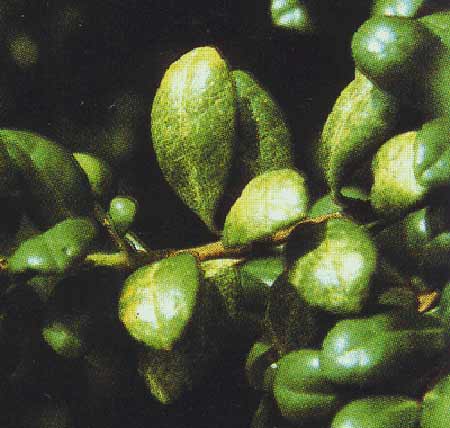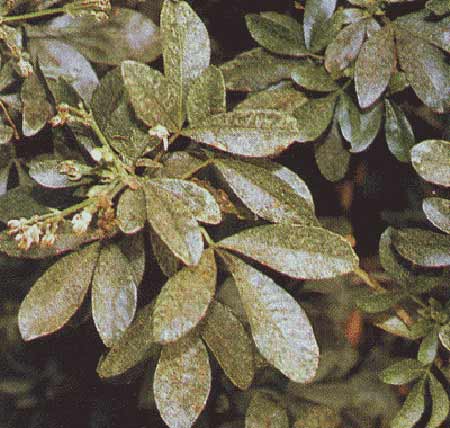Spider Mites
Spider mites are commonly found on many indoor and outdoor plants. The presence of these insects is most noticeable by the white, yellowish, or hazel mottling or striping in green leaves, the result of the mites sucking the sap from the undersides of the leaves. To confirm the presence of the spider mites, hold a sheet of white paper below a suspect leaf, or leaves, and thump or tap the top of the leaf to dislodge the insects. Small specks resembling ground pepper will fall on the sheet and begin to move around. Pressing or rubbing them will leave wet smudge marks.
Some of the many species of spider mites produce fine webbing on or over the leaves. This webbing collects dust and airborne debris, creating a dirty appearance.
Spider mites are not insects. They are arachnids, the same family as spiders, and ticks. Some mites are beneficial, others are insects to plants, animals or humans. The several varities of spider mites are considered destructive. Each of the varieties of spider mite has plant and climate preferences. Some prefer leafy plants, while others prefer conifers. Conifer infesting spider mites generally do most of their damage in the early spring, while temperatures are still cool. Others are most active during the heat of summer.
Spider mites can be controlled by spraying with an insecticide appropriate for the type of plant infested, at a time appropriate for the type of spider mite. The egg of the spider mite is not affected by chemical treatments. But, since the life cycle of most spider mites is 7 to 10 days, three successive treatments at 7-day intervals will generally eliminate the insects.









